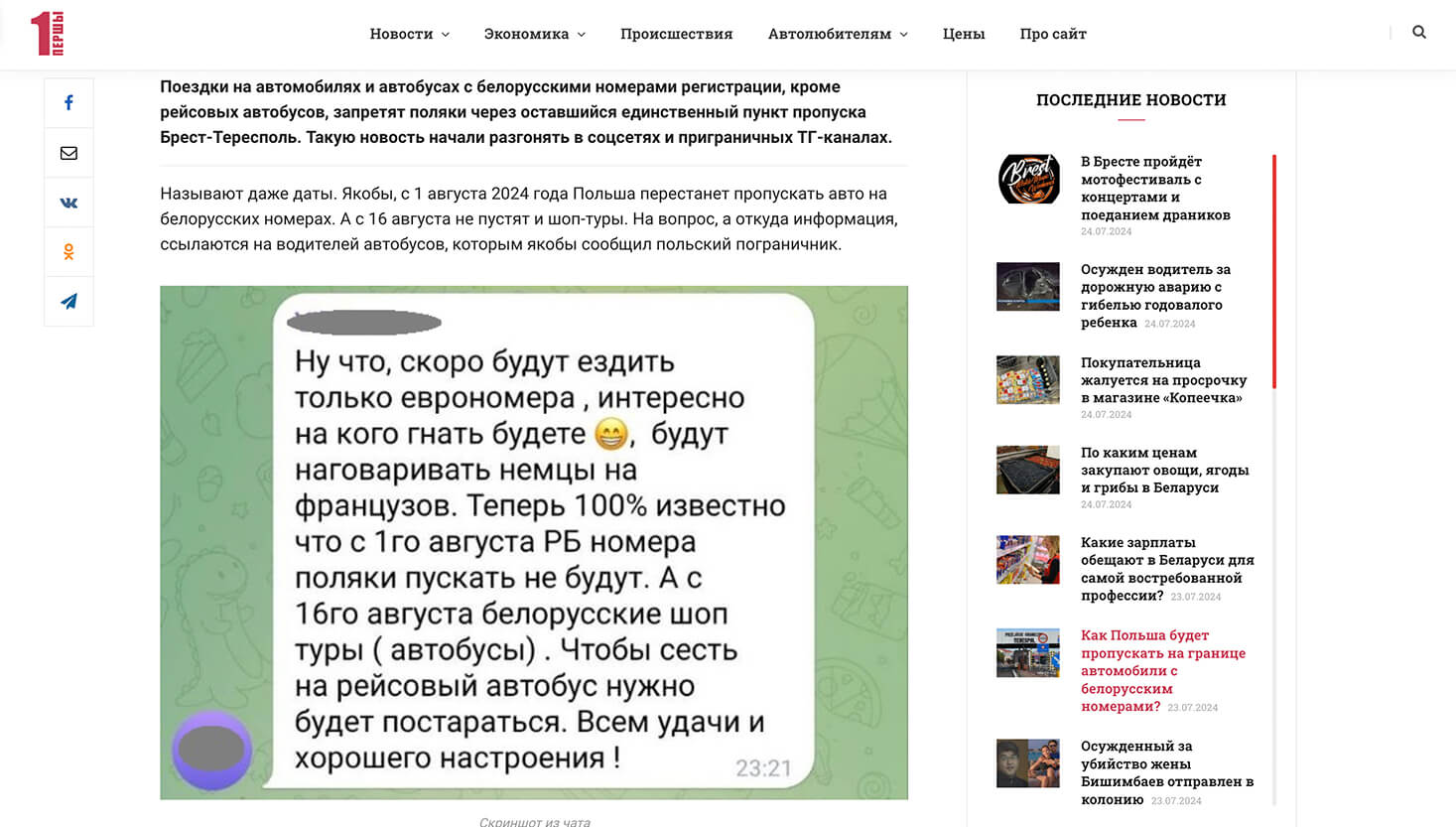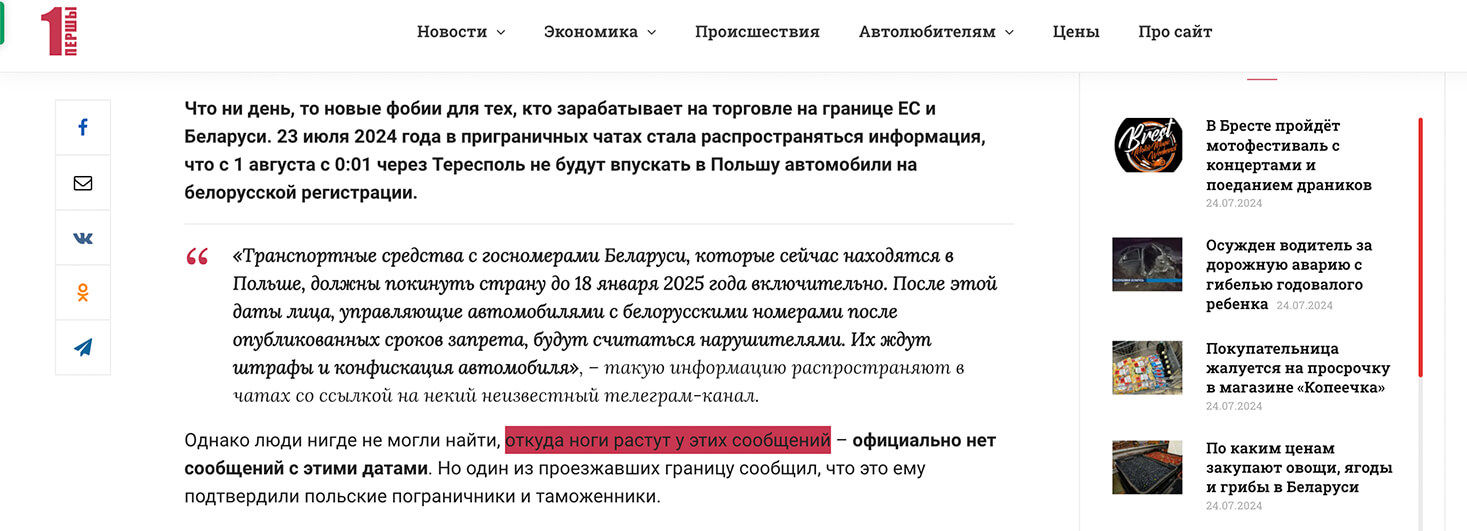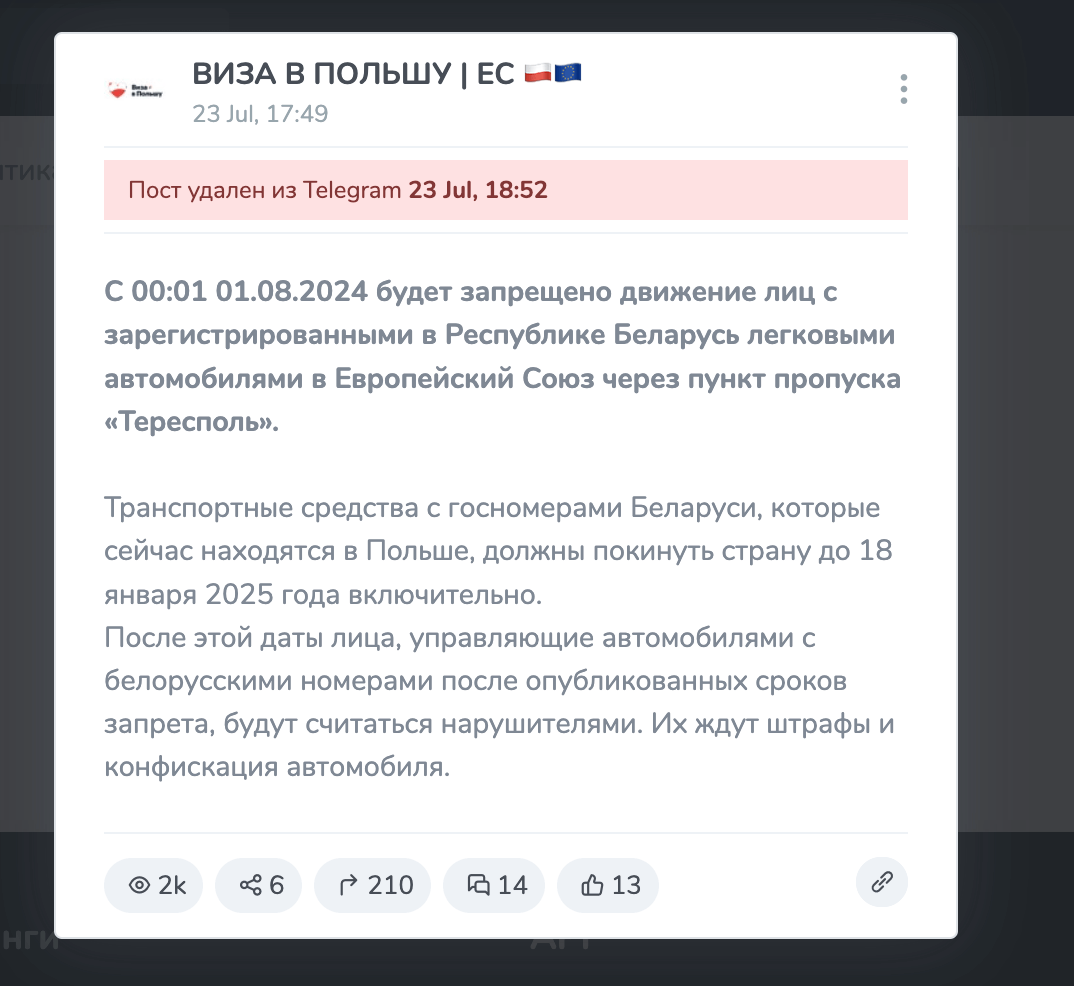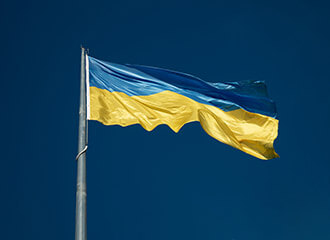На русском языке:
Новость о “запрете на въезд в Польшу с 1 августа” — это спланированная кампания по дезинформации, начатая еще в воскресенье
Yesterday, a number of independent media outlets reported that Poland was banning cars with Belarusian license plates from entering Terespol border crossing starting from August 1. Moreover, it was reported that cars with Belarusian license plates allegedly have to leave Poland by January 18, 2025.
It should be noted that this information was spread without any links to official resources. None of the Polish agencies reported on the introduction of the ban mentioned above. In this regard, this situation can be regarded as a deliberate misinformation campaign against Poland.
It started three days ago
This information began to spread on Sunday, July 21. It was first published by the TikTok account @pershyregion, which in its video told about the rumors that Poland was going to close the passage for Belarusian cars from August 1, and would allegedly prohibit the passage of Belarusian buses from August 16. All this was presented as “information from Polish border guards.” The video was published at 09:34 on 21.07 and has already got more than 142 thousand views and 240 comments. On the same day, this rumor was also launched in another TikTok account – @pershy.2.
Screenshot of the video with rumors about a possible ban on entry of Belarusian cars into Poland / TikTok @pershyregion
Note: The website https://1pr.by/ was registered on 2024-01-04, and the first video in the TikTok account @pershyregion was uploaded on 2023-06-19. In 2021, the editor of the website «Pervyi Region», Aleh Suprunyuk, had his house searched by the KGB as part of a criminal case on terrorism, and in July 2021 it became known that Aleh Suprunyuk was tried in Brest for «distribution of extremist materials.»
The confirmation that it was these TikTok accounts that started spreading this fake news is a message in one of the chat rooms for people crossing the border, where a user asked a question about the source of information about Poland’s planned border closure and received the following answer:
«Someone made a video on TikTok that they’re closing the border crossing on August 1.»
Screenshot of a discussion of a rumor about a possible ban on entry to Poland in one of the border chat rooms
At the same time, the news discussing the rumor about a possible entry ban also appeared on the website 1pr.by (this website is apparently linked to the TikTok account mentioned above). On July 21, it published an article under the title «Going to Poland only by shuttle buses: truth or fake?»
The article was published after the video was published in the TikTok account @pershyregion. It claims that the news about the possible closure of the Brest-Terespol border crossing started to spread in social networks and «border Telegram channels», a screenshot of a message from an unknown chat room is also given.
Screenshot of the article "Going to Poland only by shuttle buses: truth or fake?" / 1pr.by
We note that we couldn’t find the original message in any of the public chat rooms for people crossing the border. It may have been published in a private chat room.
On July 23, the fake news continued to circulate with new details
On July 23, this resource published another article under the title: «Poland will ban entry for cars with Belarusian license plates starting from August 1?». The new article uses a different tone of narration, which doesn’t correspond to the content of the materials published two days earlier.
Screenshot of the article "Poland will ban entry for cars with Belarusian license plates starting from August 1?" / 1pr.by
In the article dated 23.07.2024, the authors call the alleged entry ban a “new phobia” and don’t understand «where these reports are coming from.» On July 23, the news about a possible ban on entry to Poland from August 1 was covered by the Telegram channel @dokumenty_polsha11.
At 17:49, this channel published a post, which also claimed that from 00:01 on August 1, Poland banned the entry of cars with Belarusian license plates. And after 1 hour and 3 minutes the post was deleted.
Screenshot of the deleted post from the Telegram channel @dokumenty_polsha11 / by.tgstat.com
We should note that in a short period of time, this post was spread over 210 chat rooms and was deleted after independent media had written about it, who published this news without preliminary fact-checking.
Later, the press secretary of the head of the National Tax Administration of Poland officially denied the information about the ban on the entry of cars with Belarusian license plates into Poland from August 1 in his commentary to the journalists of the Belsat TV channel.
What does all this tell us? Conclusions
In this situation, we can see a clear algorithm of work to spread misinformation:
- Publication of the video in TikTok;
- Articles promoting rumours about the possible closure of the crossing with a presumably fake screenshot;
- Discussion of the news in border chat rooms with provocative questions («Is it true that Poland is closing the border?»);
- And finally, the post in a Telegram channel, which existed for a short time, but achieved its ultimate goal – the information was caught by independent media and published without verifying its reliability.
At the same time, it is important to note that at all stages of this campaign, all information was presented as initially unsubstantiated rumors from «some border guard», while doubts about the news being fake or not («but what if it’s true», «I don’t want to believe it, but you never know», etc.) were actively suggested.
Thus, the spreading of rumors about the ban on the entry of cars with Belarusian license plates into Poland from August 1 can be assessed as a deliberate spreading of misinformation not confirmed by official Polish sources. This information is aimed at spreading anxiety and promoting anti-Western sentiments among Belarusians amid the restrictions already imposed by the Baltic states. Attention is drawn to the rapid spreading and removal of misinformation from the sources of the fake news, which is subsequently difficult to disprove if it gets into the major media outlets.







